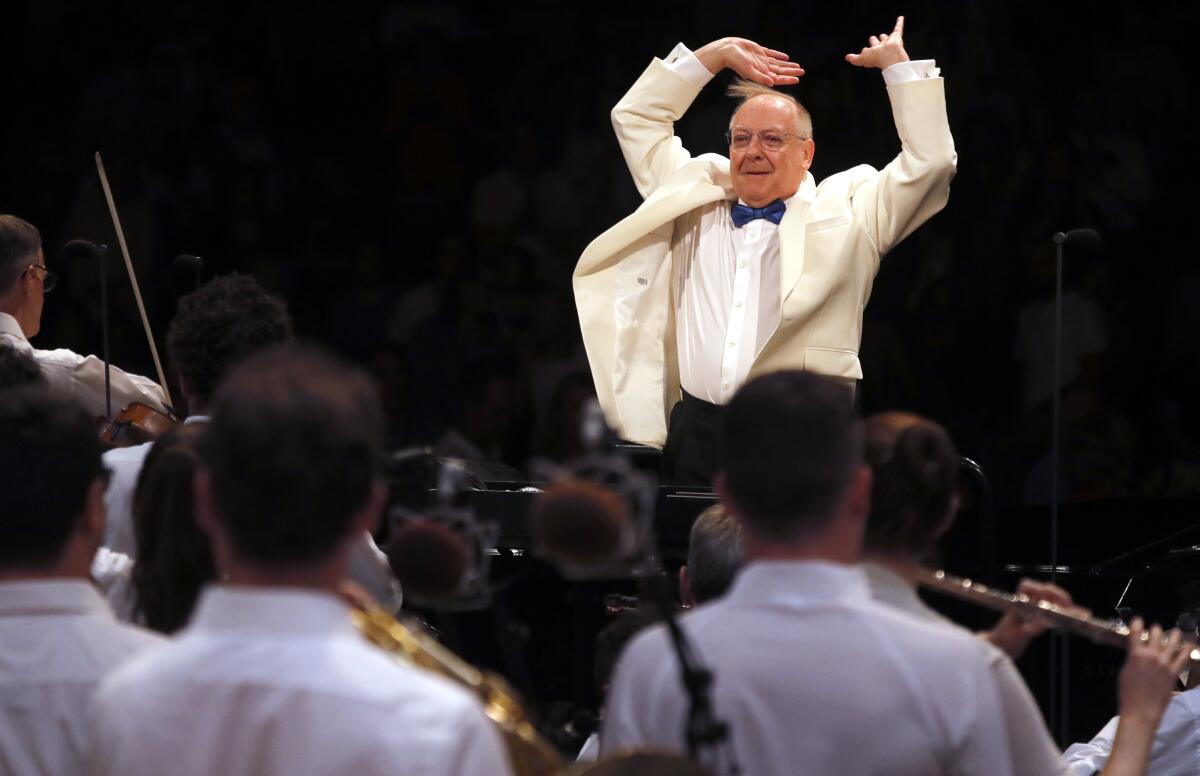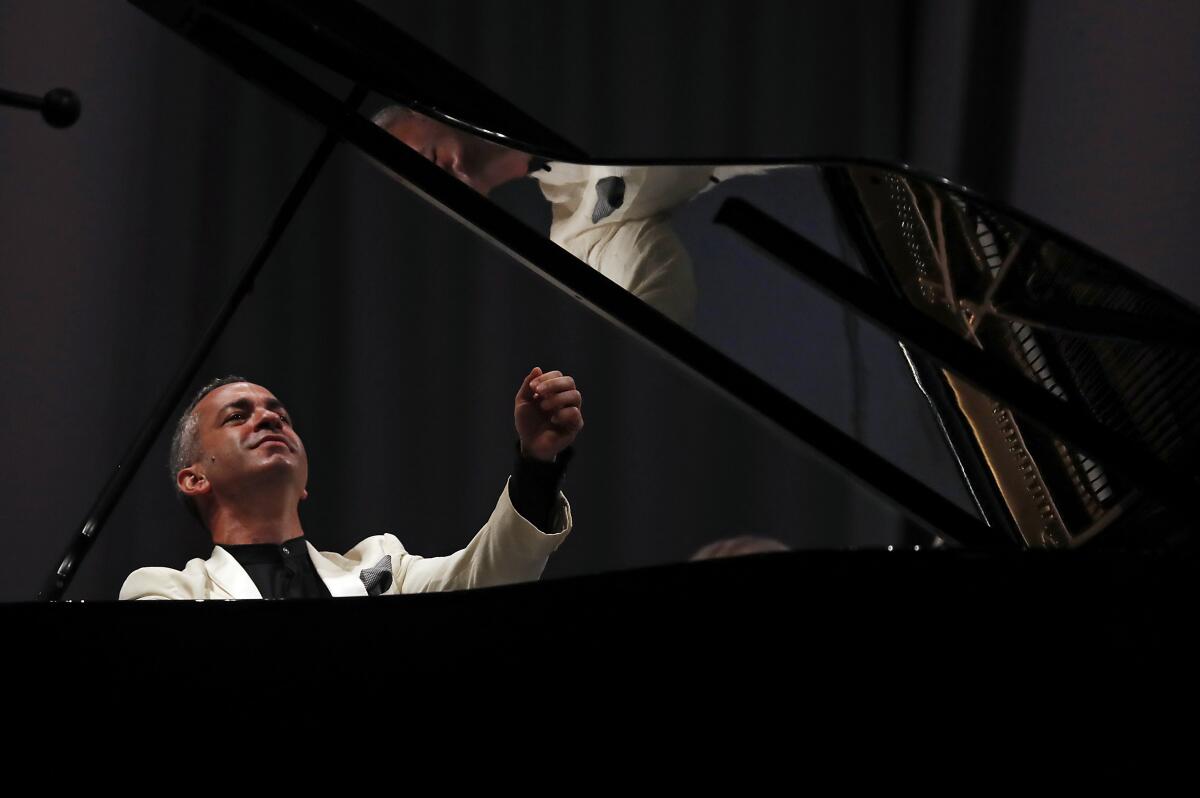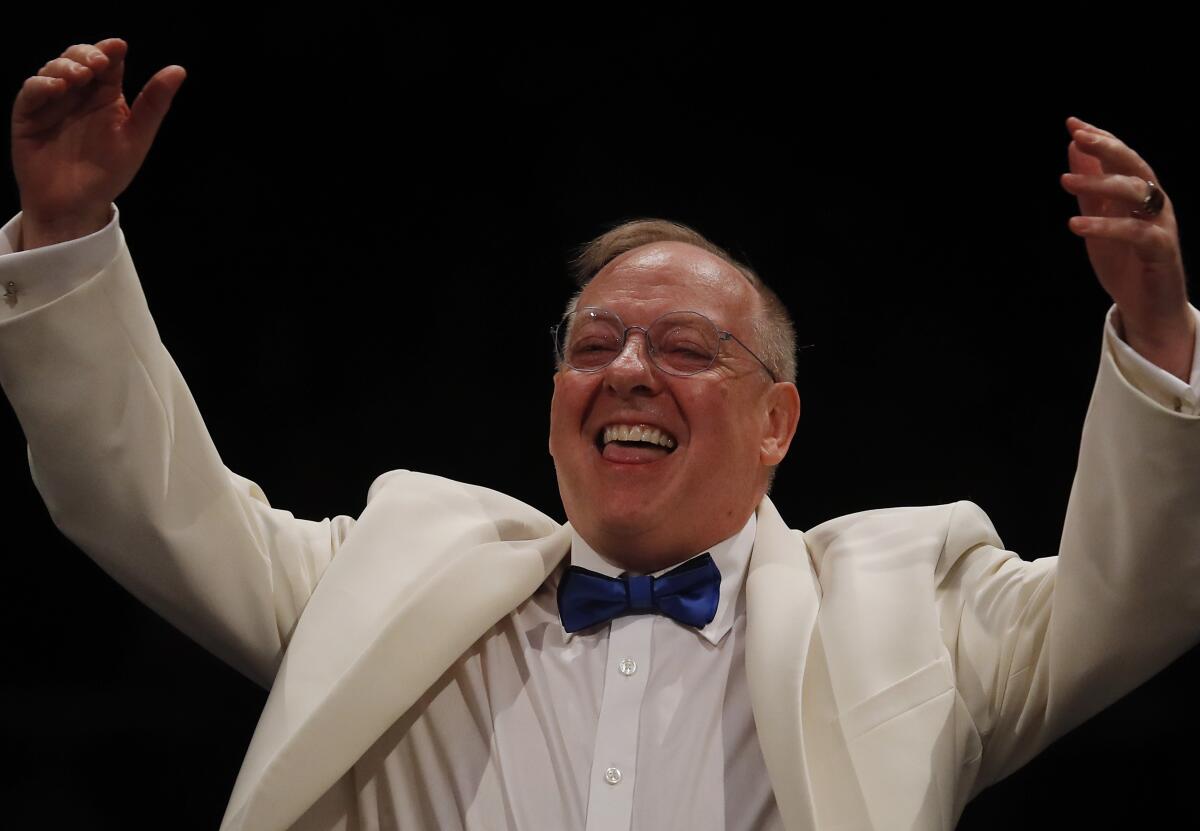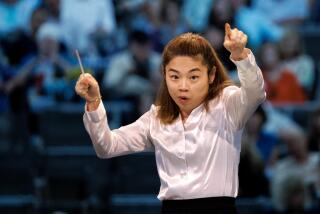Review: Hollywood Bowl’s Mozart marathon is thin on surprise. In the end, that’s just fine

Here we go again. It’s the first week of September, and the summer heat is reaching its customary crescendo in Southern California. The hard-working members of the Los Angeles Philharmonic have shed their white Hollywood Bowl coats in order to play in something approaching comfort. And Nicholas McGegan — the Bowl’s go-to 18th-century guy — returned to his customary late-season place on the Bowl podium to lead another all-Mozart concert Thursday night.
The all-Mozart evening is becoming as much of a Bowl fixture as the long-running Tchaikovsky Spectacular — and the programming is threatening to become just as predictable. In the past, McGegan has been eager to explore some of the more obscure corners of the Köchel catalog, or couple Mozart with out-of-period rarities like Jacques Ibert’s “Hommage à Mozart.” This time, there was no attempt to depart from the roll call of standards, as packaged in the usual overture-concerto-symphony format.
Granted, it was top-drawer Mozart: the Overture to “The Magic Flute,” the Piano Concerto No. 23 in A major, and for me at least, the greatest symphony of all, the Symphony No. 40 in G minor. But that just made it all the harder to say something fresh and revealing that would be remembered long after the last notes echoed through the hillsides.
The hot early-evening weather seemed to put a drag on “The Magic Flute” overture performance, with McGegan operating at something less than his usual effervescent self. (I recall something similar happening six years ago this week in a Mozart curtain-raiser here.)

Pianist Inon Barnatan and McGegan have been here together before, collaborating on the Mozart Piano Concerto No. 22 in 2014. Both were participants at an all-star concert that closed Barnatan’s first season as La Jolla Summerfest’s music director last month.
As he did with the No. 22, Barnatan tried to shine a different light upon the No. 23 with a sophisticated, constantly changing variety of dynamics and touches — sometimes from note to note. Some of Barnatan’s percussive highlighting seemed to bring Mozart into contemporary times, if only for fleeting moments. The performance really came to life in the third movement with a wit that was evident both to the ear and on Barnatan’s impish facial expressions on the video screens, amply urged on by McGegan.
With the heat subsiding around 9 p.m., McGegan and the members of the L.A. Phil were able to deliver a performance of the Symphony No. 40 that was full of pep and vigor, with beautifully molded phrasing in the second movement and an exhilaratingly-paced fourth movement. Some might find more existential tragedy in this G minor symphony, but McGegan generally doesn’t do angst — and it’s just as well, for his Mozart with a big, wide smile is often just what we need.

More to Read
The biggest entertainment stories
Get our big stories about Hollywood, film, television, music, arts, culture and more right in your inbox as soon as they publish.
You may occasionally receive promotional content from the Los Angeles Times.










